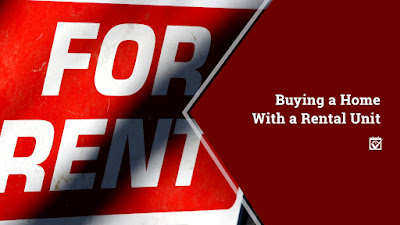Every homeowner will leave a mark on the homes they own, this is an inevitable fact of life. The only question you need to ask yourself is if your mark will be a good one. Will you be the homeowner who planted the gorgeous maple tree that eventually turns into a beloved climbing tree or are you the one that glued neon green shag carpet to the hardwood floors?
We’ve made a short list of some of the most dramatic ways to destroy your home’s value without even trying all that hard so you can, hopefully, avoid these problems when you go to sell. Now, this is an important point to note: if you’re in your forever home, go hog wild. If you don’t need to sell that puppy ever, feel free to do whatever thrills you. Just be aware that your outlandish choices could prevent things like refinances and even reverse mortgages down the road.
Now that you own a house, people will be giving you all sorts of weird advice. You’re going to have to learn to tune it out, because generally, random people don’t know. Most people own two or three homes in their lives, which doesn’t give them a whole lot of experience with market values and making upgrades that will make a house really pop.
Realtors, general contractors and other home pros, on the other hand, make it their business to know what’s just in vogue and what’s a classic, evergreen sort of modification that will stand the test of time. These are the people to ask when you really need a second set of eyes.
But, before you even get that far, let’s count down some of the worst ideas for your new home.
#4 Really Personalizing the Place
Look, we know you’re eager to make your house your own. But step away from the lime green wallpaper and the orange tiles. Just for a minute. Think this through. Some buyers can see past over-personalization, others simply cannot. There’s a reason Realtors used to advise sellers to paint everything beige, it creates a blank pallet for a buyer to start from.
If you want to use quirky wallpaper, choose something that’s easy to remove when you go to sell. You may want to choose a tile that is mostly neutral and scatter those orange ones in just here and there like confetti. In short, tone it down a bit. However, feel free to paint to your heart’s desire — just plan to repaint before you put the house on the market.
When a buyer walks into your home, the first impression they have informs every other thought they have as they walk through. They’re simultaneously calculating two things in their heads: “How much can I afford to pay for this house?” and “How much will I have to pay to fix this place?” Each intolerable thing they encounter, like that orange tile, is another thing that goes in the repair budget. As it grows, the price they’re willing to pay shrinks.
Oh, you left the flamingo wallpaper in your bedroom? The repair budget’s getting pretty heavy. And these are just the immediately visible things, they haven’t yet gotten to the inspection period. The point here is: do you, but do it in a way that can be reversed before anyone shows the house.
#3. Converting the Garage to Anything Else
There’s a difference between using your garage as a gym and making it a gym permanently. When it’s a permanent gym, you can’t push some stuff out of the way and pull the car in real quick to get it out of the rain. In fact, you probably don’t even have a garage door anymore!
Many people have made this hasty decision, turning their garages into master suites, home gyms, playrooms and home offices, not considering the long term ramifications. Then, after dumping thousands of dollars into the project, they find out that it’s extremely difficult to resell their home.
No matter how professionally the conversion was done (and some are done very well), the buyer says to themselves, “Where am I going to stash my lawnmower?” Even if the yard’s a postage stamp, it’s a valid question.
Buyers come into a transaction with a certain set of expectations and, frankly, when they’re looking at houses in certain areas or certain prices that typically come with garages, it sort of breaks their brains to find one that doesn’t quite fit the model. That’s the beginning of the price chopping spiral. Eventually you’ll discount the house much more than you ever intended or just give up on selling and rent it out or not move at all.
#2. Tearing Down (Some) Walls
This one is actually not a hard and fast rule. There are sometimes walls that should come out. But don’t make this call without consulting with an architect or a general contractor because there are several things to consider, including the structural integrity and flow of the home.
The walls that you definitely should never tear out are the ones that reduce bathroom or bedroom number, unless you have something like five or more beds and three or more baths. At that point, you have a little wiggle room. As long as you maintain the American standard of a three bedroom, two bath home (or whatever is standard in your neighborhood), you’re probably ok.
However, turning a three bedroom home into a two bedroom home because you wanted to expand a bedroom is a value killer. If you think about it from a market perspective, it might make a bit more sense. A larger, or more mature, family is most likely to buy a three bedroom home. They’re going to have a bigger budget because there are two incomes, they need more partitioned spaces because there are possibly teenagers involved.
The same house with the same square footage, but with two bedrooms, is more likely to be shown to young families with small children, possibly only one income while one parent stays home to raise the toddlers, or even single people. Their budgets are smaller, which means that the two bedroom market simply doesn’t support the higher prices of the three bedroom market.
When your home is appraised, your appraiser will be pulling comparable homes based on things like neighborhood, square footage and numbers of bedrooms and baths. So, if the other two bedroom homes are selling for $30k less than three bedrooms, that means yours is going to appraise somewhere well below where you might expect, maybe even below what you paid for it.
Bottom line: Don’t knock out walls without professional consultations with your Realtor and an architect or general contractor at minimum so you can understand the full impact of this decision.
#1. Unprofessional DIY Repairs
There are two kinds of DIYers: those with significant trade experience and those without. If your main qualifications involve eighth grade shop class, you probably should not try to handle any big jobs on your own. Start small and work your way up, watch lots of YouTube videos, practice on test materials that don’t affect your home and for the sake of your house and your financial future, recognize and accept when you’re in over your head.
A home pro is often less expensive than you might imagine if you just call them in first. When they’re asked to clean up a bad repair and still make the original correction, it can cost a lot extra.
Finding these sorts of obvious DIY repairs in a home is a terrifying prospect for potential buyers. When they see them, they wonder what else you’ve tried to repair on your own. Did you rewire the electrical box? Is the house going to burn down in the night because you did something to the HVAC?
Because they don’t know you or your level of competency, they just see that one botched repair and hyperfocus on it until they either run away or submit an offer significantly lower than what you were expecting.
Protecting Your Home’s Value is Simple
It’s really quite simple to protect your home’s value, despite how this blog may make it sound. Just ask yourself two simple questions: “Can I really do this myself?” and “Is this decision one that will stand the test of time? If not, is it easy to undo?” When you’re not sure, just open HomeKeepr and find a pro who can help.








